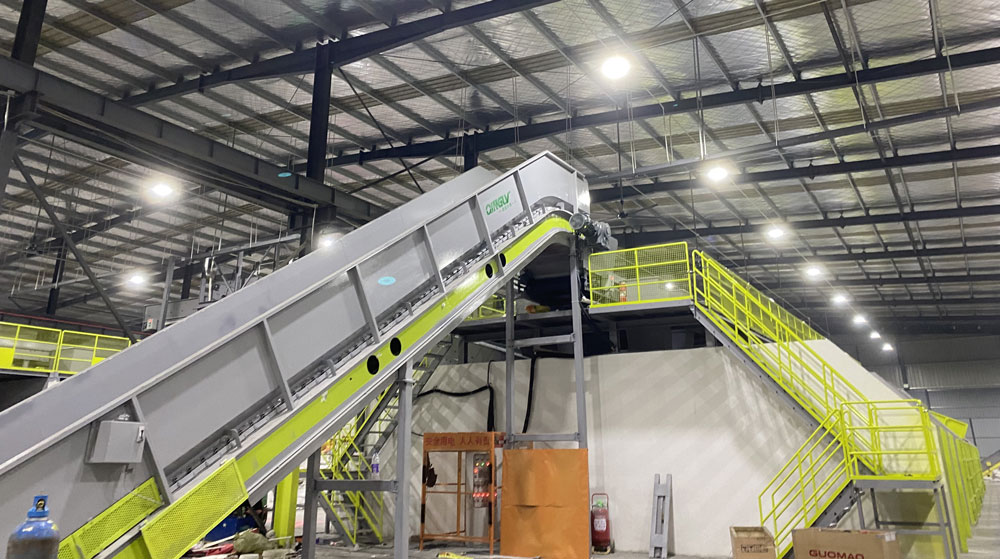 Time:2025-05-28
Time:2025-05-28
 Source:青绿环境
Source:青绿环境
I. What is Recyclable Waste Sorting Equipment?
Recyclable waste sorting equipment refers to a mechanical system specifically designed for the automated sorting of recyclables. It is primarily used to separate recyclable solid waste such as paper, plastic, metal, and glass. The equipment typically integrates various functions, including conveying systems, shredding systems, magnetic separators, air classification systems, optical identification, and manual assistance. It can accurately sort waste based on physical properties such as material density, color, and composition.

II. Main Components and Technical Principles
Modern recyclable waste sorting systems are highly automated and intelligent, with core technologies including:
- Conveying and Shredding Systems: Transporting mixed waste to the sorting line and performing preliminary shredding.
- Magnetic Separation: Removing ferrous metal materials using strong magnets.
- Eddy Current Separation: Separating non-ferrous metals such as aluminum.
- Air Classification Systems: Separating lightweight plastics from heavier materials based on weight and suspension characteristics.
- Optical Identification Technology (NIR): Classifying non-metallic materials such as plastics and paper using near-infrared light.
- Manual Quality Inspection Platform: Conducting manual re-inspection of materials identified by the equipment to ensure accuracy.
The integration of these technologies significantly improves sorting efficiency and accuracy, reduces labor costs, and enhances overall processing capabilities.
III. Advantages of Recyclable Waste Sorting Equipment
- Enhanced Resource Utilization: Accurate sorting allows for the effective recycling of plastics, metals, and paper, reducing resource waste and promoting a circular economy.
- Reduced Environmental Pollution: Separating recyclables from general waste reduces landfilling and incineration, minimizing land occupation and harmful gas emissions, and protecting the ecological environment.
- Improved Work Efficiency and Reduced Labor Costs: High automation enables long-term stable operation, reducing labor intensity and increasing sorting capacity.
- Adaptability to Various Application Scenarios: It can be widely used in waste treatment plants, recycling stations, environmental protection enterprises, and industrial parks, with flexible configuration capabilities.
IV. Market Prospects and Development Trends
With the continuous advancement of national waste sorting policies and the growing environmental awareness of residents, the recycling and processing of recyclable waste are gradually becoming an industry with clear industrial chains and mature business models. In the future, with the integration of artificial intelligence, big data, and robotic vision, recyclable waste sorting equipment will further develop towards "unmanned, intelligent, and systematic" directions.
Moreover, continuous investment in the environmental protection industry will drive equipment upgrades. New types of sorting equipment with data analysis, remote monitoring, and Internet of Things management capabilities are expected to become the mainstream in the industry.
Recyclable waste sorting equipment is not only an important safeguard for the implementation of waste sorting but also a crucial component in building green cities and achieving resource recycling. As a vital part of environmental protection equipment manufacturing, its level of intelligence and systematization will directly affect the overall efficiency and economic benefits of waste treatment. In the future, with policy support and technological innovation, recyclable waste sorting equipment will play an even more significant role in promoting ecological civilization and green development goals.
If you need further customization based on specific product models, application scenarios, or target customers, I can continue to optimize the article style or add technical parameters and case studies. Would you like me to make more personalized modifications for you?













 Prev
Prev











